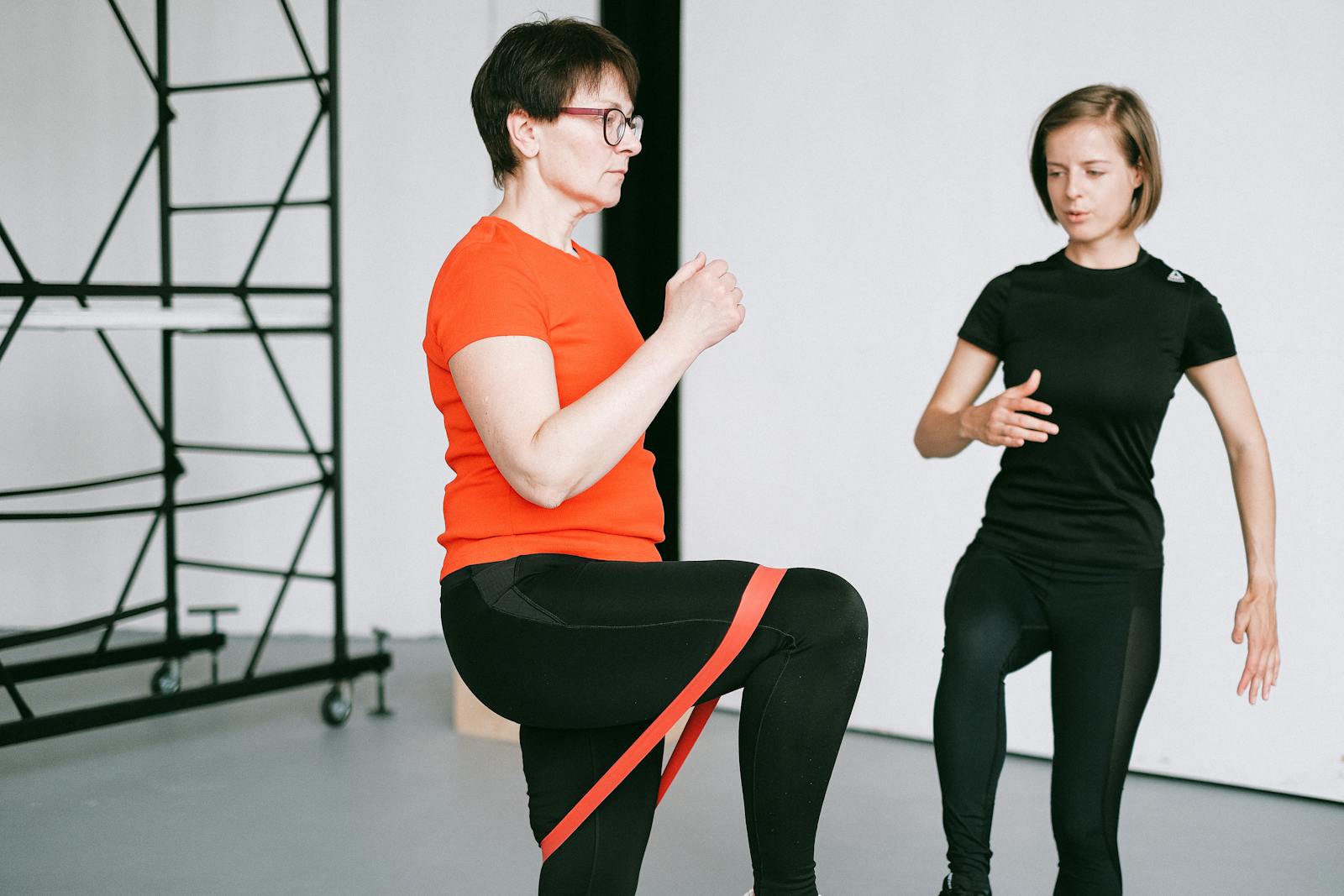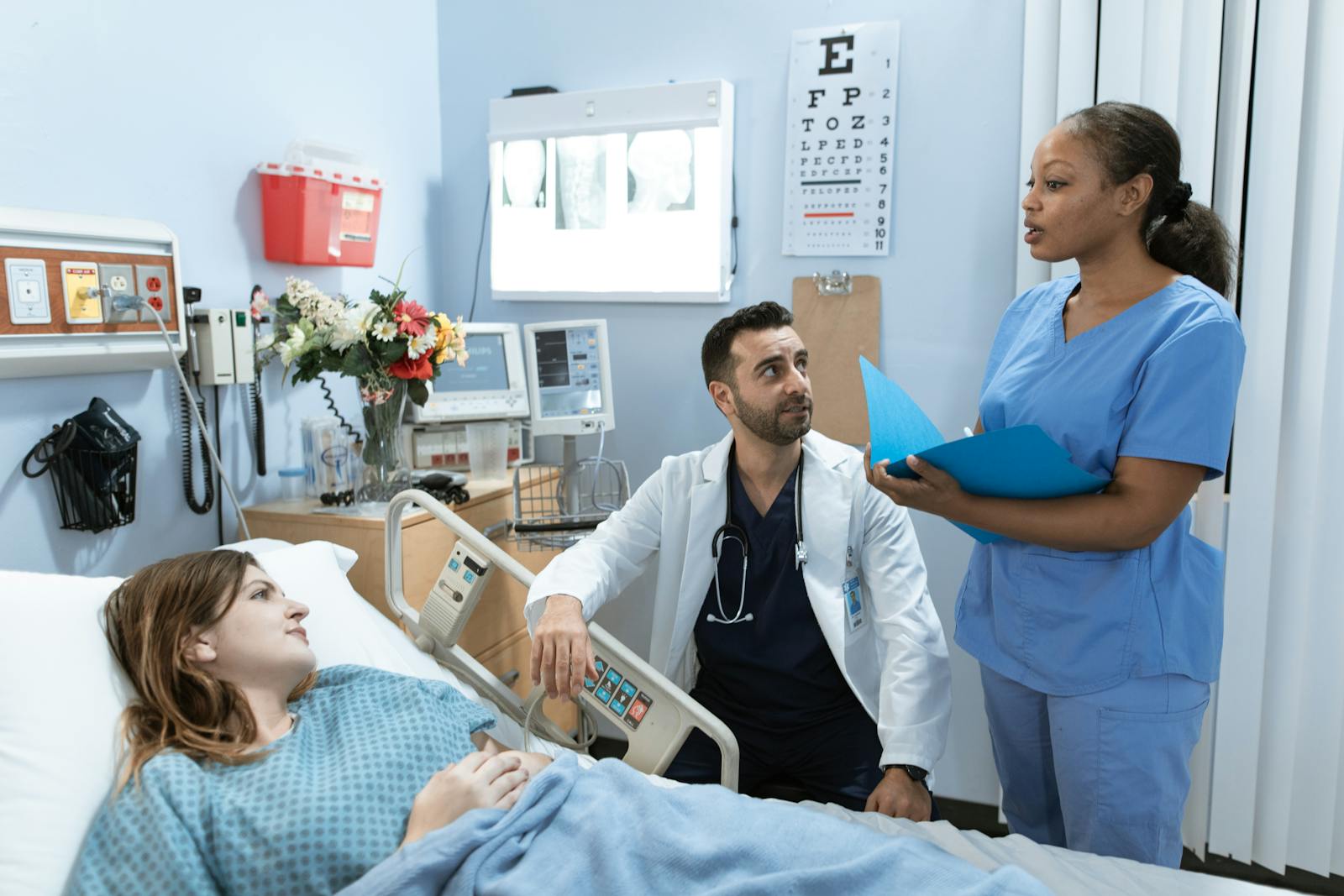The recovery process following a coccygectomy, a surgical procedure to remove the tailbone, is a multifaceted journey requiring careful management and understanding. This discussion will explore the various stages of recovery, from immediate post-surgery experiences to long-term rehabilitation and emotional health considerations. By providing insight into pain management strategies, home care practices, and indications for seeking further medical attention, we aim to facilitate a comprehensive understanding of this process. The objective is to equip patients and caregivers with the knowledge necessary to navigate this challenging post-operative period, thus fostering the best possible outcomes.
Understanding Coccygectomy
What exactly is a coccygectomy? This is a surgical procedure aimed at removing the coccyx, also known as the tailbone, typically performed to alleviate persistent pain or discomfort in that area. The decision to perform a coccygectomy is typically a last resort, after other nonsurgical management strategies have failed to provide relief.
Diving into the coccygectomy procedure details, the surgery begins with the patient under general anesthesia. The surgeon makes an incision over the coccyx, detaches the muscles and ligaments attached to the bone, and carefully removes the coccyx. Post-removal, the wound is closed using sutures or staples. The procedure is complex and requires a skilled surgeon due to the proximity to critical structures like the rectum and sacral nerves.
Pre-surgery preparation is a critical phase. Patients are advised to undergo a thorough medical evaluation to ensure they are fit for surgery. They may be asked to stop certain medications, refrain from eating or drinking for a certain period before surgery, and arrange for post-surgery care. Education about the procedure, potential risks, and expected recovery timeline is an essential part of pre-surgery preparation. This meticulous preparation helps facilitate a smoother surgical experience and recovery.
Immediate Post-Surgery Experience
Following the surgical procedure of coccygectomy, the patient’s immediate post-surgery experience plays a significant role in their recovery journey. This phase is characterized by both physical and emotional challenges, including surgical anxiety, dietary changes, and adaptation to a new physical state.
Surgical anxiety, commonly experienced post-operatively, can significantly hinder the healing process. This is a psychological response to the fear of unknown outcomes, potential complications, and possible pain. Patients may also experience anxiety related to their altered physical state, as they adjust to the removal of the coccyx. Healthcare providers can help manage this anxiety by providing clear, comprehensive information about the procedure and the expected recovery timeline.
Furthermore, post-surgery nutrition plays a pivotal role in the patient’s recovery. The body’s demand for energy and nutrients increases after surgery to support tissue repair and regeneration. Therefore, a balanced diet rich in proteins, vitamins, and minerals is crucial to facilitate healing and improve the patient’s overall wellbeing. Adequate hydration should also be maintained to ensure optimal body function.
Managing Pain After Coccygectomy
Pain management, a crucial aspect of post-coccygectomy care, involves a multifaceted approach to minimize discomfort and facilitate a smooth recovery process. Effective pain management strategies not only improve patient comfort but also enhance the overall recovery trajectory, reducing the risk of complications and promoting functional restoration.
To enhance pain control, a combination of pain medication options and alternative pain treatments is often recommended. The following are four critical components in managing pain after coccygectomy:
- Prescribed Pain Medications: Patients are typically prescribed a regimen of pain medications post-surgery, often involving opioids, non-steroidal anti-inflammatory drugs (NSAIDs), or acetaminophen. The specific selection and dosage are tailored to the patient’s individual needs and pain levels.
- Alternative Pain Treatments: Techniques such as physical therapy, massage, acupuncture, and biofeedback can complement pharmaceutical pain management, potentially reducing medication dependency and associated side effects.
- Patient Education: Proper patient understanding of pain management strategies, including drug administration and potential side effects, is key to facilitating effective pain control.
- Regular Follow-ups: Regular consultations with healthcare providers allow for continuous assessment and adjustment of pain management strategies, ensuring optimal pain control and patient comfort throughout the recovery process.
Post-Operative Care at Home
Upon returning home after coccygectomy, meticulous post-operative care plays a pivotal role in promoting a swift and uneventful recovery. Two key components of this care are Wound Care and Dietary Adjustments.
Wound care after coccygectomy is vital to prevent infection and promote healing. The surgical area should be kept clean and dry at all times. Patients are advised to change dressings regularly as per the surgeon’s instructions, using sterile techniques to reduce the risk of microbial contamination. Any signs of infection, such as increased redness, swelling or discharge, should be promptly reported to the healthcare provider.
Dietary adjustments also form a crucial part of post-operative care. As patients may experience constipation due to decreased mobility and pain medications, a high-fiber diet and ample hydration may be recommended. This helps to ease bowel movements, reducing strain on the surgical site and facilitating healing. Additionally, a diet rich in protein and essential vitamins and minerals aids in wound healing and tissue regeneration.

Physical Therapy and Rehabilitation
In the aftermath of a coccygectomy, engagement in a structured physical therapy and rehabilitation program becomes an integral component of the recovery journey, serving to enhance mobility, alleviate discomfort, and hasten return to normal function. This involves the use of various therapy equipment, including but not limited to resistance bands, exercise balls and specialized machines for strengthening the muscles surrounding the coccyx area.
The rehabilitation process can be further understood through the following four essential components:
1. Initial Assessment: This involves a comprehensive evaluation of the patient’s post-operative condition to develop a tailored rehabilitation plan.
2. Manual Therapy: Here, physical therapists use hands-on techniques to improve flexibility and reduce pain.
3. Therapeutic Exercises: The use of therapy equipment in executing specific exercises helps in strengthening muscles and improving balance.
4. Support Groups: These provide emotional and psychological support, aiding in coping with the physical discomfort and stress of recovery.
In essence, the strategic use of therapy equipment along with a well-structured rehabilitation program not only hastens the healing process but also helps in the emotional coping mechanism via support groups. Thus, a holistic approach to physical therapy and rehabilitation is crucial for an effective coccygectomy recovery.
Timeline for Coccygectomy Recovery
The recovery timeline following a coccygectomy can be distinctively segmented into three phases: the initial post-surgery phase, the physical therapy phase, and long-term recovery expectations. Each phase plays a crucial role in the patient’s overall recovery, with varying healing timelines and differing sets of challenges and requirements. A comprehensive understanding of these phases will provide both patients and caregivers with a realistic expectation of the recovery journey after a coccygectomy.
Initial Post-Surgery Phase
After undergoing a coccygectomy, patients enter the initial post-surgery phase, a critical period marked by a specific timeline for recovery. This phase revolves around two main aspects: surgical wound care and diet recommendations.
- Surgical wound care: The first few weeks post-surgery are critical for wound healing. Patients should follow the surgeon’s instructions for wound cleaning and dressing changes to prevent infections.
- Pain management: Regular pain medication as advised by the healthcare provider is essential for comfort.
- Diet recommendations: A high-fiber diet and adequate hydration are vital to prevent constipation, a common side effect of pain medication.
- Activity level: Patients should limit strenuous activities but should not remain completely immobile as it can lead to complications.
Each of these points plays a significant role in ensuring a smooth and effective recovery.
Physical Therapy Importance
As the patient navigates the recovery timeline following a coccygectomy, physical therapy emerges as a crucial component, significantly influencing the pace and effectiveness of the healing process. This discipline aids in managing pain, improving mobility and restoring function. The use of therapy equipment, such as balance tools and resistance bands, can help increase strength and flexibility in the affected area. Equally important is the recovery diet, tailored to promote healing and replenish nutrients lost during surgery. High-protein foods, fiber-rich fruits, and vegetables are recommended to aid tissue repair and counter constipation, a common post-surgery concern. Thus, a synergistic approach of physical therapy, employing specific therapy equipment and a strategic recovery diet, can expedite the healing trajectory after a coccygectomy.
Long-Term Recovery Expectations
Building on the importance of physical therapy and a balanced diet in the early recovery stages, it’s crucial to set realistic expectations regarding the long-term recovery after a coccygectomy.
- Diet Adjustments: Long-term recovery often involves making dietary changes to promote healing and manage long-term comfort. Fiber-rich, anti-inflammatory foods are essential to improve digestion and reduce discomfort.
- Physical Rehabilitation: Continuation of prescribed exercises from physical therapy is vital to strengthen muscles and improve mobility.
- Mental Resilience: The recovery journey can be physically and emotionally taxing. Mental resilience plays a significant role in managing pain, staying motivated, and coping with potential lifestyle changes.
- Follow-up Care: Regular check-ups are necessary to monitor healing, manage any complications, and adjust pain management strategies.
Potential Complications and Risks
Despite the typically successful outcomes of coccygectomy, it is critical to consider the potential complications and risks associated with this surgical procedure. Central to these is infection prevention. Ensuring sterile techniques during surgery and meticulous postoperative care are paramount in minimizing the risk of bacterial contamination. Patients are often prescribed antibiotics as an added preventive measure.
Wound healing is another key component of recovery. Abnormal or delayed healing of the surgical site can lead to chronic discomfort, wound dehiscence, and secondary infections. Therefore, patients are advised to maintain a healthy diet and stay hydrated to facilitate the healing process.
Other potential complications include hematoma formation, rectal injury, and nerve damage. These are relatively rare but can cause significant morbidity if they occur. Hematomas, or collections of blood near the surgical site, can cause pain and delay healing. Rectal injuries, while extremely rare, can lead to fecal incontinence. Nerve damage may result in numbness or weakness in the lower extremities.
Understanding these potential risks allows patients and healthcare providers to take proactive steps in mitigating them, ensuring a smoother and more successful recovery.
Returning to Work and Daily Activities
Resuming one’s professional responsibilities and everyday tasks following a coccygectomy requires careful planning and gradual progression, taking into consideration the individual’s healing process and comfort level. The process involves a balance between resuming normalcy and ensuring a conducive environment for healing.
Work modifications and activity restrictions play a significant role in this recovery phase. Certain considerations should be made:
- Work Modifications: Depending on the nature of one’s job, modifications may be necessary to accommodate the healing process. These may involve adjusting work hours, altering physical tasks, or incorporating ergonomic aids to reduce discomfort.
- Activity Restrictions: It is crucial to limit certain activities that may exacerbate pain or delay healing. This might include heavy lifting or long periods of sitting.
- Pain Management: Effective pain management is essential for a smooth transition back to work and daily activities. This might involve medication, physical therapy, or alternative treatments.
- Regular Check-ups: Regular consultations with a healthcare provider are necessary to monitor progress and adjust plans as needed.

Emotional Health During Recovery
While managing physical comfort during the recovery period post-coccygectomy is certainly crucial, it is equally important to consider the emotional health of the individual, as the process can present its own set of psychological challenges. Surgery and the subsequent recovery period can be emotionally taxing, leading to feelings of isolation, anxiety, and depression. Therefore, fostering emotional resilience is of paramount importance for mental wellness throughout this period.
Emotional resilience refers to the ability to adapt to stressful situations or crises, such as post-surgery recovery. This may involve developing coping strategies like seeking emotional support from loved ones, engaging in relaxing activities, or seeking professional help if necessary. These approaches can also contribute to mental wellness, an essential component of overall health, which is defined as a state of well-being in which the individual realizes his or her own abilities, can cope with the normal stresses of life, and is able to make a contribution to their community.
To ensure emotional health during recovery, it is crucial to maintain open communication with healthcare providers about emotional struggles. This will allow for appropriate interventions and resources to be provided, promoting emotional resilience and mental wellness during the recovery process.
When to Seek Medical Attention
Recognizing the signs that warrant medical attention is an integral part of the recovery process following a coccygectomy. It’s crucial to stay vigilant to any changes that could indicate complications. Here are four key emergency indicators that could suggest the need for immediate medical intervention:
- Severe pain: While some discomfort is expected after surgery, severe or increasing pain can be a sign of complications, such as an infection or nerve damage.
- Infection symptoms: These include fever, chills, redness, swelling, or pus drainage from the surgical site. Any of these signs should not be ignored as they could indicate a potentially serious infection.
- Functional impairment: If you experience difficulty in performing basic tasks such as sitting, standing, or walking, or if there is a significant increase in pain while performing these activities, it’s time to seek medical attention.
- Changes in bowel or bladder function: Any alterations in your ability to control bowel or bladder functions could indicate nerve damage and warrant urgent medical attention.
Tips for a Smooth Recovery
To ensure a smooth recovery after a coccygectomy, patients must be mindful of certain areas such as pain management and physical therapy. Effectively managing post-operative pain is critical for patient comfort and can significantly impact the rate of recovery. Concurrently, early mobility and a structured physical therapy plan contribute to improved functional outcomes and assist in regaining normality of life as swiftly as possible.
Pain Management Post-Coccygectomy
Managing pain effectively is a critical aspect of the recovery process following a coccygectomy, requiring a comprehensive and individualized approach based on each patient’s unique needs and responses.
- Pain medication options: Physicians typically prescribe opioids for short-term use, non-steroidal anti-inflammatory drugs (NSAIDs), or acetaminophen for longer-term management.
- Alternative pain relief: Methods such as ice packs, rest, and elevation can also provide temporary relief.
- Patient education: Patients should be taught the importance of taking medications as prescribed and reporting any side effects promptly.
- Regular follow-ups: Regular check-ups allow for adjustments in the pain management plan based on the patient’s reported pain levels and response to treatment.
This strategic approach ensures effective pain management, facilitating a smoother recovery.
Mobility and Physical Therapy
In the wake of a coccygectomy, a patient’s mobility can be significantly impacted, thus necessitating the incorporation of physical therapy into the recovery plan to regain strength and movement. A well-structured therapeutic program often includes the use of mobility aids, which play a pivotal role in enhancing stability and decreasing discomfort during the initial recovery phase. Exercise modifications are also integral to a successful rehabilitation process. Adapting exercises to suit the patient’s current physical condition helps avoid undue strain on the healing area. By progressing gradually, and under the supervision of a skilled physical therapist, patients can regain confidence in their mobility, improve muscle tone, and accelerate their overall recovery post-coccygectomy.
Frequently Asked Questions
What Are Some Alternative Treatments to Coccygectomy?
Alternative treatments to coccygectomy include non-surgical interventions such as physical therapy, medication, and injections. Coccydynia management can also involve lifestyle modifications like ergonomic seating and pain-relieving exercises. Consulting a specialist is imperative for personalized treatment plans.
Can Pregnancy Affect the Recovery Process After a Coccygectomy?
Yes, pregnancy can complicate the recovery process post coccygectomy due to added pressure on the pelvic region. It’s crucial to consult a healthcare professional for personalized advice regarding post coccygectomy pregnancy management.
How Does Coccygectomy Affect Sexual Function and Intimacy?
Coccygectomy can potentially impact sexual function and intimacy due to physical discomfort. It may necessitate emotional adjustments and alter relationship dynamics, warranting open communication and mutual understanding between partners during the recovery process.
Are There Any Dietary Recommendations to Aid in the Recovery Process After Coccygectomy?
Post-coccygectomy recovery can be enhanced by a balanced diet rich in proteins, vitamins, and minerals for tissue repair. Also, adequate hydration aids in wound healing. Specific dietary advice should be personalized with a registered dietitian.
Are There Support Groups or Resources Available for Individuals Who Have Undergone a Coccygectomy?
Yes, support groups and resources are available for individuals post-coccygectomy. These platforms aid in emotional healing and mental health management. Websites like ‘Spine-Health’ offer forums to share experiences and gain advice from peers.

